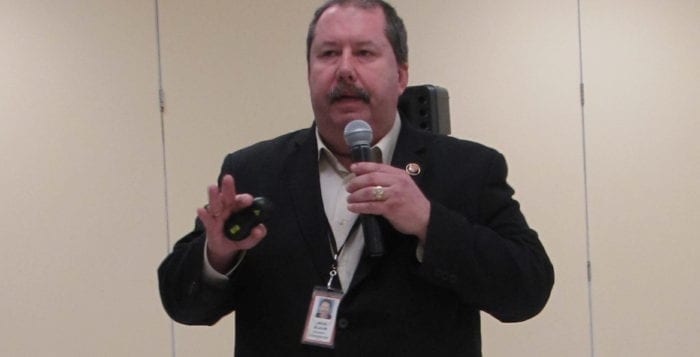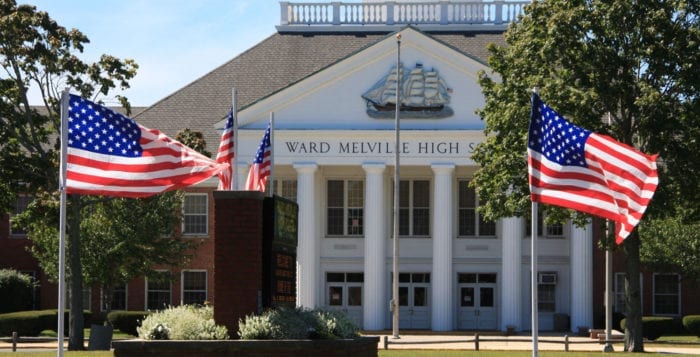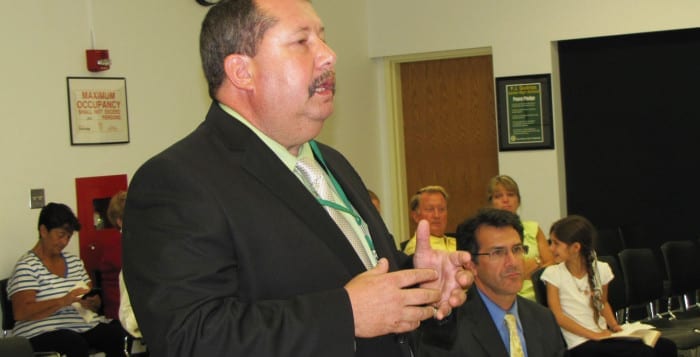By Andrea Paldy
Three Village school district officials devoted a large segment of their second meeting of the new school year to addressing security infrastructure, training and protocols.

Jack Blaum, district security coordinator and chief emergency officer, used the Sept. 5 meeting to review procedures and highlight enhancements for the year ahead. The school district now has 11 new emergency management technicians on staff, he said. These are district employees — among them Jeff Carlson, assistant superintendent for business services — who trained with the Suffolk County Office of Emergency Management in the spring.
Three Village is the first K-12 school district in the state to run and graduate students from an EMT course, Blaum said. Having EMTs on staff means school nurses have a support system and additional resources, he said.
During a phone interview, Carlson said it is as important to have personnel trained in “everyday” needs such as CPR and bleed control as it is to be trained in protocol for an active shooter.
“The more people that know CPR, the better for all of us,” he said, adding that having first responders on site could improve recovery time and even chances of survival.
The 200-hour course included hefty reading assignments, homework and weekly tests, in addition to practical instruction in CPR, splinting, patient assessment and transport with other skills required of an EMT, Carlson said. Participants completed hospital and ambulance rotations. To receive certification, they took two New York State exams — one written and one practical — to demonstrate their skills.
The school district plans to offer more EMT courses, Blaum said, adding that he hopes with funding from the county and state, the district could eventually be its own first-responder agency.
Also new to the district’s arsenal of security procedures is an enhanced ID scanner in building entrance vestibules. The district has locked all
entrances to schools during school hours since the 2012 Sandy Hook school shooting. The default lockout system currently in place ensures that visitors enter the building only after scanning an ID and being buzzed through two doors.
New scanner software cross-references the Megan’s Law sex offender database and allows the district administration to add pertinent information to flag individuals who should not enter buildings.
“The more people that know CPR, the better for all of us.”
— Jeff Carlson
These safeguards are in addition to other “target hardening strategies” already in place, such as bullet-resistant film, lockdown drills and interior doors that are lockable with a single key so that a staff member can secure any classroom door from the inside in case of an emergency. Additionally, each building has a hidden “panic system” and an automated lockdown alert system.
Blaum said security guards at each school are either active or retired law enforcement officers. Along with vehicle patrols and interior and exterior camera surveillance, the district works closely with the Setauket and Stony Brook fire departments and has direct lines to the Suffolk County Police Department’s 6th Precinct. There is also district staff trained in bleeding control, lockdown and active shooter options, improvised explosive recognition and planning for bombing incidents, Blaum said.
“Mental well-being is the key to all of this,” he said, explaining that the district’s measures to increase guidance- and mental-health staff can help ensure the well-being of staff and students and assist in keeping the community safe. Even so, Blaum said he and his team remain vigilant and work with administrators, psychologists, social workers and the school resource officer to assess threats.
Though these protocols and infrastructure are in place, Blaum said national events compel him to always look for ways to improve security in the school district. Future enhancements could include upgrades to automated classroom door locks that activate all locks at once, ID scanning to let staff open interior doors with ID badges, and perimeter gates at the high school.
The district will host a safety and security community forum at R.C. Murphy Junior High School, Sept. 13, at 7 p.m.









